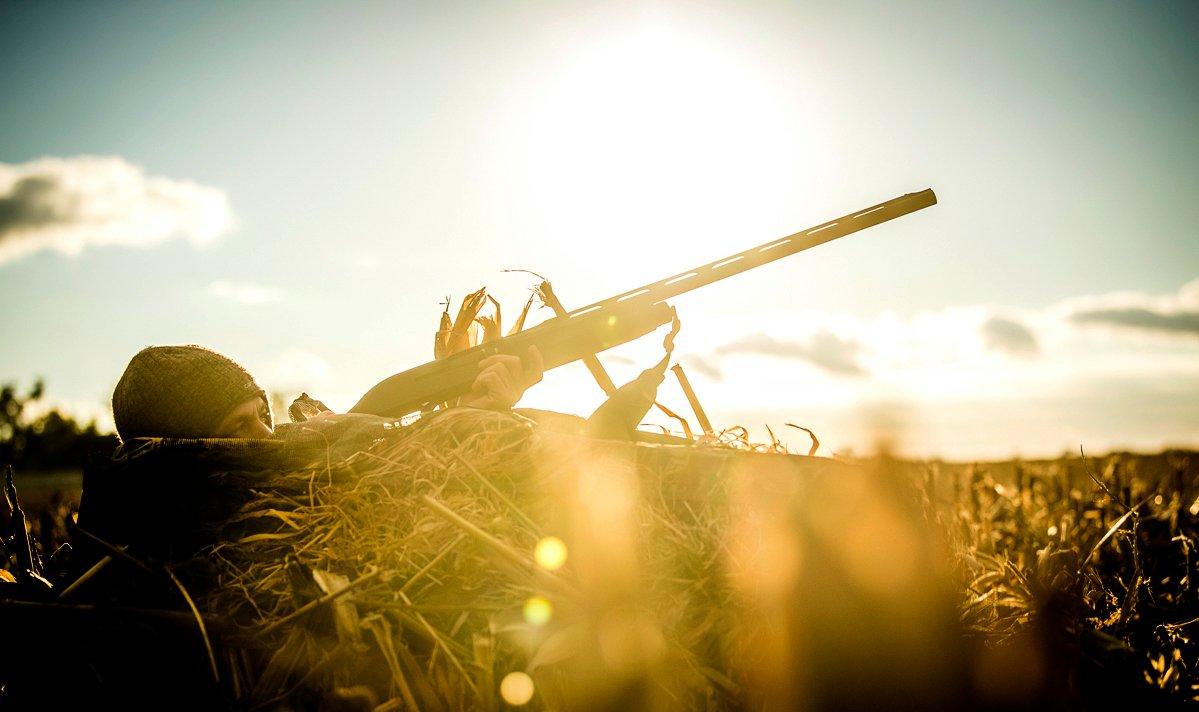Diagnose and correct these problems to bring home more ducks
Some days, shooting mallards in harvested ag fields seems so easy: Locate ducks, set up where they want to land, and start shooting.
But many other days, dry-field hunts take left turns. Birds don't show up. Flocks flare or won't commit. Shooters can't capitalize on opportunities. And those problems can lead to empty straps and frustrated hunters.
Don't let that happen to you this season. Here's a brief rundown of reasons why you're not consistently shooting mallards in fields — and a few solutions, too.
Insufficient Windshield and Front-Porch Duty
Everyone knows you must scout to find field birds and then acquire permission to hunt private land. However, few understand the extent of the work involved to consistently score opportunities. The best field hunters burn uncountable gallons of gas and spend hours looking through binos.
Often, it's best to have a team of scouters who can split up in several directions. Start near a refuge or other roosting water and watch as birds depart in the morning or return in the evening. That at least provides clues about their destination. Then, use online mapping apps to locate likely fields, and search with a grid pattern. Meanwhile, watch for tornadoes of birds setting down or slicks of mallards feeding in stubble. (Hint: If you find geese, you'll probably find mallards, especially at first and last light.)
Of course, finding birds isn't enough. You must find the landowner and gain access. Apps with tax-record info help greatly with this, especially if they include a landowner's address. Then you can knock on a door or conduct a Google search for a phone number. You'll get turned down quite a bit, but no one said it was easy.
Showing Your Hand
It sounds like a broken record, but concealment is the No. 1 concern when you're trying to lure mallards close, especially when trying to hide big groups in fields with little natural cover. First, use what's available. Corn or wheat stubble works very well, and so do roadside weeds (a gas-powered weed whacker helps considerably with harvesting sufficient cover). Don't neglect features in the field that might help: rock piles, wet ditches or even fence lines. And if an adjacent field has better cover than the destination field — uncut hay next to harvested oats, for example — consider setting up there, even if it's a bit off the X.
Weave cover into the loops on your field blinds, and then stack it liberally around blind edges to break up their outline. With big groups, place blinds close together to form one large blob instead of several smaller but more conspicuous blobs.
How much cover is enough? When you think you're set, you're probably only halfway there.
Setup and Spinner Gaffes
This goes hand in hand with concealment. Setting up incorrectly near or within your decoy spread can doom a field hunt. Most guys, of course, set up near the rear of their spread and directly upwind from the kill hole. That can work, but when the wind blows, birds will be looking directly at your hide while attempting to finish.
If you have excellent cover, set up upwind of the spread, but offset your blinds left or right somewhat from the kill hole so ducks don't look directly at you on approach. When your cover is marginal, place blinds perpendicular to your spread so mallards only see the decoys when they come in. And when the wind howls, set your blinds closer to the head of the spread. That way, low-approaching ducks should be in range before they smell a rat and flare.
Always place your best-looking decoys at the head of the spread, as ducks will look at those first and longest. And leave good-sized kill holes where groups of birds will feel comfortable landing.
Mallards focus on spinning-wing decoys in fields, especially when winds are relatively light. Therefore, it makes sense to put spinners far enough away from your hide — say 20 yards, at least — so they don't pick you out. Also, set the spinners in kill holes, where you expect ducks to finish. Placing them poorly can lead to flaring birds or awkward shot opportunities.
Indecisive Calls
Field mallards can be notoriously finicky when finishing. That's especially true when you're working big flocks. Often, it's tough to determine when to take birds: Do you shoot as they pass overhead, or let them work around for a better opportunity?
Make sure a confident, experienced pit boss calls the shot. The boss must read the behavior of birds to determine whether they might finish or slide off, and then decide to shoot or wait. You won't always get it right. Folks often want to wait for the classic feet-down, wings-back shots, and there's nothing wrong with that. But if birds only present 30-some-yard passing shots, recognize that and take what they offer.
Click here for more Realtree waterfowl hunting content. And check us out on Facebook.








